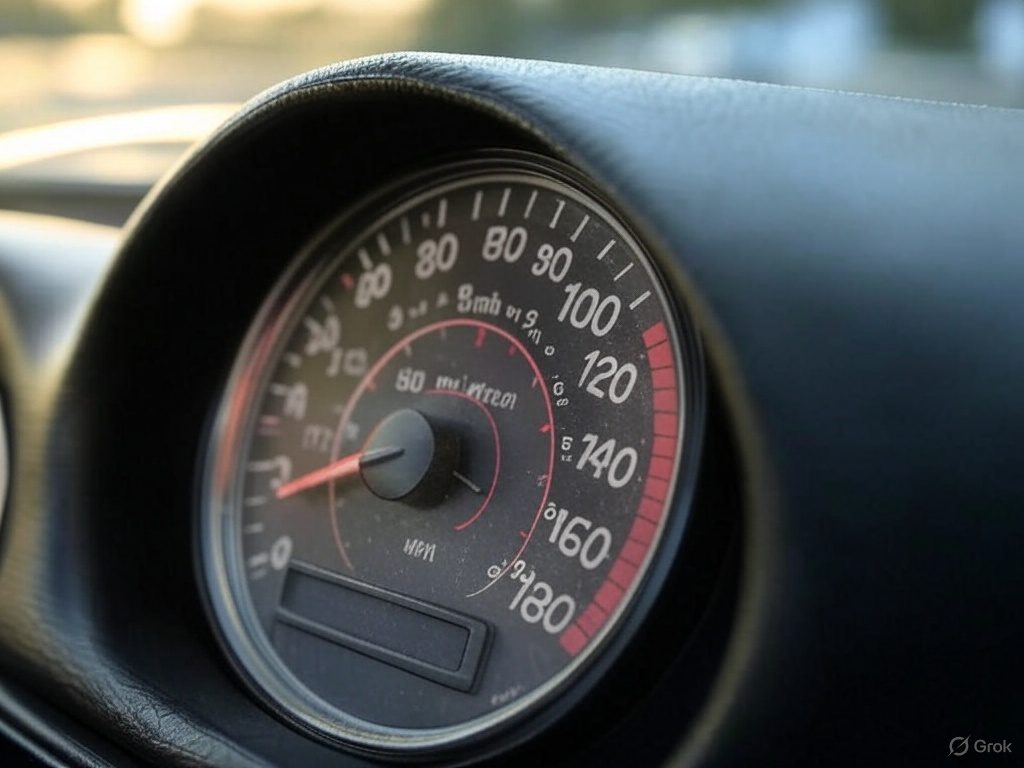Lead Foot Syndrome: Why We Can’t Resist the Speeding Urge
Have you ever wondered why you—or that driver weaving dangerously through traffic—keep pushing the gas despite knowing the risks? Speeding is more than a bad habit; it’s a curious psychological challenge. Each year, it contributes to over 12,000 deaths in the U.S. alone, according to the National Highway Traffic Safety Administration (NHTSA, 2021). That’s the equivalent of erasing a small town, yet we keep doing it. Buckle up as we explore the surprising reasons behind our need for speed.Nearly 1 in 3
fatal crashes
involve speeding
The “I’m a Great Driver” Trap
Imagine cruising along, feeling like you own the road. Most of us believe we’re better drivers than average—a cognitive quirk known as the “illusion of control.” Over 90% of drivers rate themselves above average (AAA Foundation), a statistical impossibility. This overconfidence convinces us we can handle speeding safely, even though we’d likely criticize another driver doing the same thing.“Drivers create a mental safety bubble, labeling their own speeding as ‘smart’ while judging others’ as reckless.” — Dr. Leon James, “Dr. Driving”
Compounding this illusion is the idea that the more miles we log without incident, the more skillful we assume we are. Each fast trip without a ticket feels like proof of our skill rather than a stroke of luck.Chasing the Rush
Speeding provides a quick thrill—there’s no denying it. That adrenaline surge when you pass a long line of cars or slice a few minutes off your commute? It’s instant gratification. Behavioral experts note, “We’ll often opt for a small but immediate reward over a larger, uncertain future consequence.” The problem is we’re notoriously bad at calculating time saved. Traveling 10 miles at 80 mph instead of 65 mph only saves about 2 minutes, yet we often assume it’s closer to 5 or 7.Fun Fact: Studies show we overestimate time saved by speeding by 30% to 50% (AAA, 2019). The actual payoff is often much smaller than we think!
Everyone’s Doing It
Ever noticed you’re more likely to speed when everyone else is? That’s “herd behavior.” If the flow of traffic is going 75 in a 60 zone, driving the limit can feel awkward. Research shows that drivers tend to match the surrounding speeds, even if it’s illegal (FHWA, 2015). Persuasion expert Dr. Robert Cialdini explains that when rules seem ambiguous, we look to others’ behavior for guidance—and speed limits are no exception.Click here for a surprising stat on peer pressure.
When Emotions Hit the Gas
Speeding isn’t always logical. Running late? Feeling angry or stressed? Many of us instinctively press down on the pedal to vent or make up lost time. Studies show drivers more than 10 minutes behind schedule are nearly four times more likely to engage in significant speeding (IIHS, 2018). Meanwhile, thrill-seekers—those who crave intense experiences—are 4.2 times more likely to collect speeding tickets (*Accident Analysis & Prevention*, 2016). If someone cuts you off, you might even accelerate just to reclaim your sense of control.“For some people, speeding doubles as emotional release therapy on wheels.” — Traffic Psychology Expert
Speed Limits: Rules or Suggestions?
Why do we so often ignore a 55 mph sign on a wide-open road? If it feels unrealistically low, we’re more inclined to disregard it. Research shows that compliance plummets to just 17% when limits are set 10 mph below what seems reasonable to most drivers (NCHRP). Inconsistent enforcement also plays a role—breaking the limit doesn’t feel serious unless you’re caught.85%
of drivers
follow “reasonable” limits
How to Pump the Brakes
Shock ads and heavy fines alone aren’t enough to change deep-seated habits. Real solutions consider the psychology behind the wheel: Smarter Roads: Curved road designs and visual cues can nudge us to slow down. Studies show a reduction in speeding by up to 18% using such methods (FHWA, 2020). Tech Nudges: Telematics systems—where your car reports driving data—cut speeding by 21% thanks to self-monitoring (Cambridge Mobile Telematics, 2021). Peer Power: Campaigns that highlight most people don’t speed increase speed-limit compliance by 28% (NHTSA, 2017). Mind Games: Specialized training that challenges risky thinking can reduce repeat offenses by 64% (UK Study, 2019).The Brutal Truth
Speeding’s cost is measured in more than fines. It results in over $50 billion in damages and lost lives annually (NHTSA, adjusted estimate). Because of basic physics, a collision at 60 mph delivers four times the force of one at 30 mph. Striking a pedestrian at 42 mph? They have a 50% chance of dying. By 58 mph, it jumps to 90% (AAA, 2011). Sobering indeed.Reality Check: A major European study found that a 1% increase in average speed leads to a 4% rise in fatal crashes (Nilsson, 2004).
Why It Matters
We aren’t machines. Our choices behind the wheel are driven by biases, emotions, and social cues. By recognizing these influences, road safety experts can design strategies that resonate with how we really think and act. As one expert puts it, “It’s not about lecturing—it’s about rewiring our mental approach to driving.” So the next time you feel the urge to floor it, ask yourself: Is saving a few seconds truly worth the risks? This article draws on leading traffic safety research to shed light on why we speed. Brought to you by Traffic Safety Store—visit trafficsafetystore.com for the gear that helps keep roads safe.Learn more about traffic cones, traffic signs, barriers, high-visibility gear and other traffic safety solutions at TrafficSafetyStore.com. You can also explore our wide range of Safety Vests and High-Visibility Apparel to find the right fit for your specific needs.

